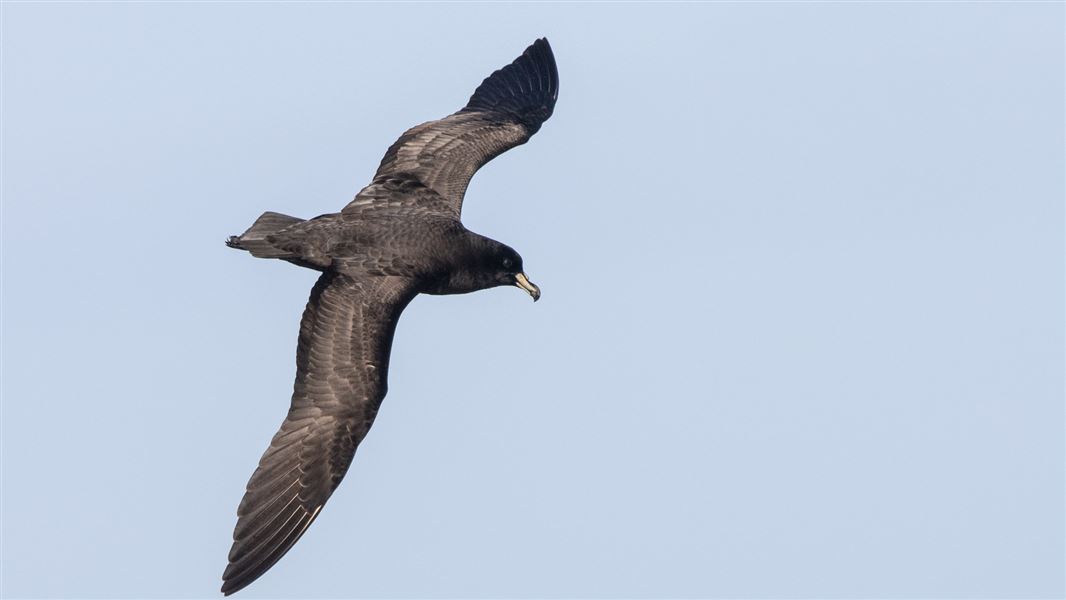The strategy was developed in partnership with Ministry of Primary Industries and Ministry of Foreign Affairs and Trade.
International Seabird Strategy vision
Seabirds of Aotearoa New Zealand are thriving and at-sea threats beyond our national waters have been addressed.
Image gallery
The strategy
Our seabirds are being accidentally killed in fishing operations across the oceans. The birds mistake baited hooks for an easy meal and can be accidentally hooked or entangled. Thankfully, there are tools and methods that can prevent this ‘by-catch’ of seabirds. Ensuring these tools and method are used by fishing requires engaging with many different fishing nations and economies. The International Seabird Strategy provides a framework and pathway for this work.
Download and view the International Seabird Strategy - Rautaki Manu Moana (PDF, 2,600K)
Key strategy objectives include four key areas:
- Treaty partnership - By 2025, whānau, hapū, iwi, and Māori organisations are engaging with international counterparts.
- Relationships and collaborations - By 2025, key states recognise that there is urgent need for action.
- Threat management - By 2030, states are implementing best practice mitigation in fleets that pose a high risk.
- Biological objectives - By 2030, the mortality rate of our ambassador species is decreasing.
We'll carry out the strategy through our work with:
- Regional Fisheries Management Organisations
- coastal and flag states with fleets that are high risk to our seabirds
- science, research, mitigation innovation and mitigation innovation and Agreement on the Conservation of Albatrosses and Petrels (ACAP).
Ambassador species
We've selected four ambassador species to help focus our work in this area. These species are of deep cultural importance to tangata whenua, are among the most threatened and have geographic ranges that overlap with many other seabirds. Reducing threats for these ambassador species will also benefit other species.
The four ambassador species are:
- Antipodean wandering albatross/toroa
- black petrel/tākoketai
- southern Buller’s albatross
- Whenua Hou diving petrel.
Antipodean wandering albatross/toroa
Classified as “Nationally Critical” this species has an annual population decline of 5%. It ranges from South Australia to South America. It is at highest risk from high seas longline fisheries in the Northern Tasman and the Eastern Central Pacific. Find out more about Antipodean and Gibson's wandering albatross
Black petrel/tākoketai
Classified as “Vulnerable” this species has one of the highest by-catch risk scores in domestic waters. It is harmed by high seas fisheries and coastal longline fisheries off north-western South American nations.
Southern Buller’s albatross/toroa
Classified as “Declining” the national seabird risk assessment ranks this species as one of the most at risk in domestic waters. The species ranges from South Australia to South America. It is also heavily impacted by fisheries in the southern Tasman Sea.
Whenua Hou diving petrel/kuaka
Classified as “Nationally Critical”, this species winters in the Southern Ocean south of New Zealand and Australia. It is threatened by vessel strike. This is when a bird collides with a fishing boat due to disorientation from light pollution. Find out more about Whenua Hou diving petrel
Resources
International outreach resource for use by ministers, agencies and high-seas fishing vessels.
Work with New Zealand towards seabird-safe fisheries (PDF, 6600K)
Keeping Track of Albatrosses - fishing vessel poster (PDF, 1100K)
Further reading
United Nations Environment Concerted Action Plan for Toroa of the Convention for Migratory Species
Fisheries New Zealand 2020 National Plan of Action - Seabirds
